On October 23, 2011, Tunisians headed to polls to elect a national constituent assembly, which will be responsible for the writing of a new constitution and forming a new interim government. That day marked the first free elections of the post-Ben Ali era, and the first democratic test for the Arab Spring, which started in Tunisia.
But before the free elections, there was the so-called “Jasmine Revolution”. Four weeks of street protests, sit-ins, slogans such as the now-famous “Dégage!” (“Go out!”). But also four weeks of unrest that left 300 people dead and 700 others injured between Dec. 17, 2010 and Jan. 14, 2011, according to the United Nations.
I traveled to Tunis, the country’s capital, the day following the resignation of President Zine El-Abidine Ben Ali. An interim government had just been created, including members of Ben Ali’s party, the Constitutional Democratic Rally (RCD). Daily street protests continued in Tunis, asking for the resignation of the new government and the disbandment of the RCD.
Protesters’ faces were tense and determined. One could also read a sense of pride on these faces. The pride to have finally “made it”, to have provoked the fall of a 23-year-old autocratic regime. Yet no one at that time could imagine that this was only the first days of a spring later dubbed the “Arab Spring” and that soon after that, Egyptians, Libyans or Syrians would take the streets of their country, too.
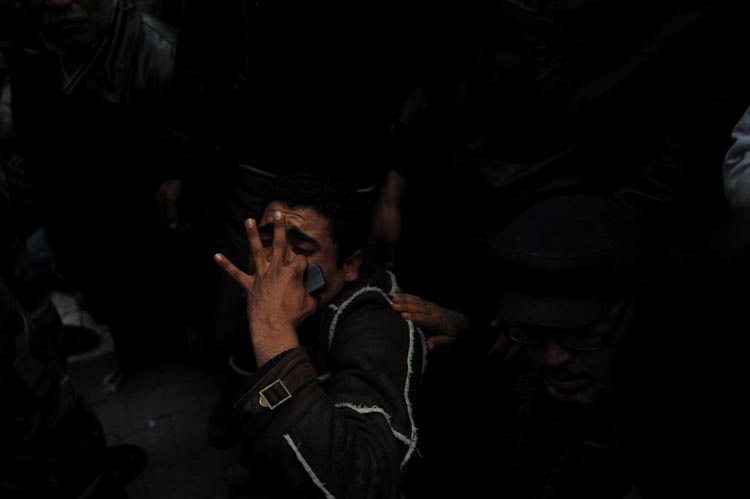 This young protester was beaten by police on Habib Bourguiba Avenue. (20.01.2011, Tunis)
This young protester was beaten by police on Habib Bourguiba Avenue. (20.01.2011, Tunis) 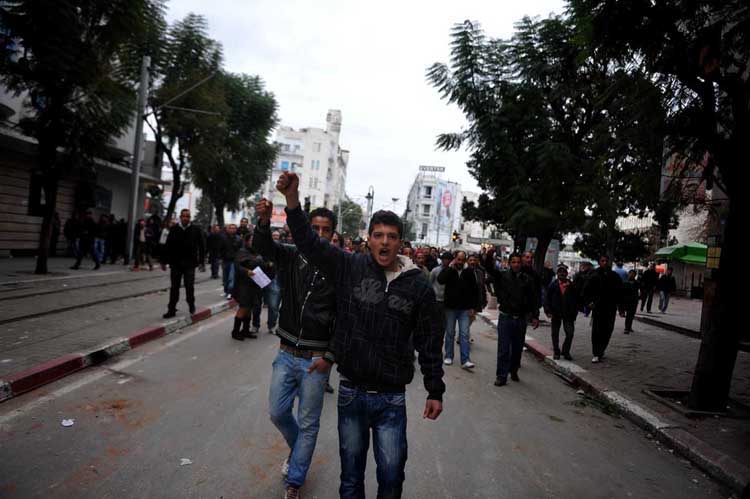 During weeks, thousands of Tunisians shouted “Dégage!“ (a French term that means “leave", "go out"), calling for the downfall of the Ben Ali regime. (18.01.2011, Tunis)
During weeks, thousands of Tunisians shouted “Dégage!“ (a French term that means “leave", "go out"), calling for the downfall of the Ben Ali regime. (18.01.2011, Tunis) 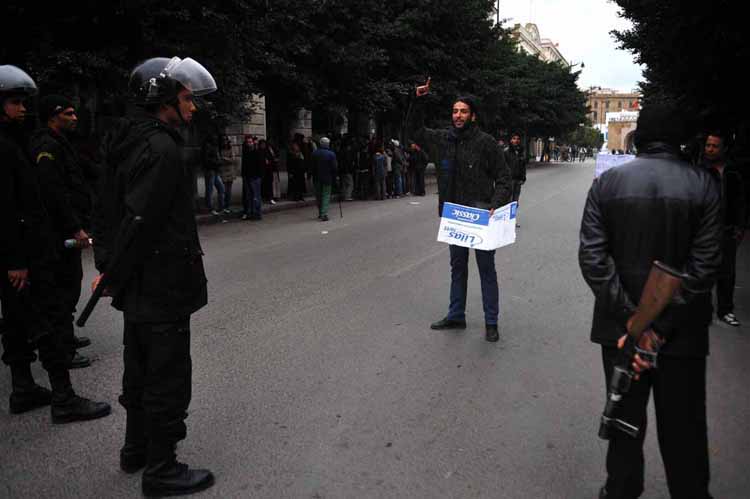 This young man lectured Tunisian police about democracy and freedom for one hour on Habib Bourguiba Avenue. (18.01.2011, Tunis)
This young man lectured Tunisian police about democracy and freedom for one hour on Habib Bourguiba Avenue. (18.01.2011, Tunis)  Protesters celebrate the ousting of President Zine El Abidine Ben Ali after 23 years in power. (18.01.2011, Tunis)
Protesters celebrate the ousting of President Zine El Abidine Ben Ali after 23 years in power. (18.01.2011, Tunis) 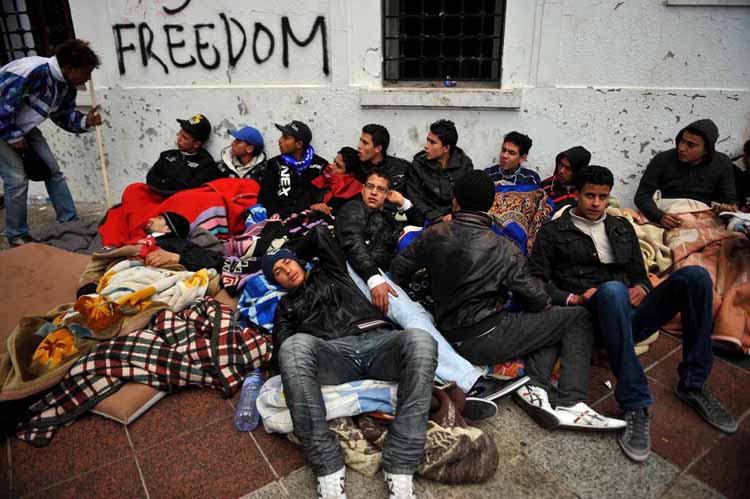 Some protesters promised to besiege the government’s building until its resignation. (25.01.2011, Tunis)
Some protesters promised to besiege the government’s building until its resignation. (25.01.2011, Tunis) 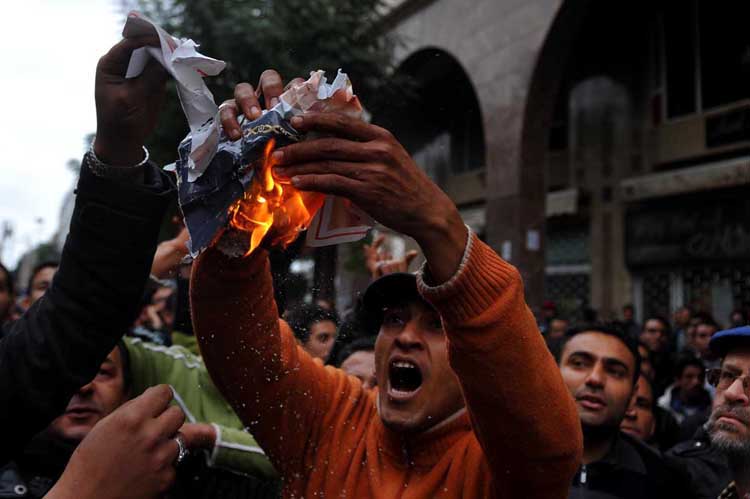 Protesters celebrate the ousting of President Zine El Abidine Ben Ali after 23 years in power. (18.01.2011, Tunis)
Protesters celebrate the ousting of President Zine El Abidine Ben Ali after 23 years in power. (18.01.2011, Tunis) 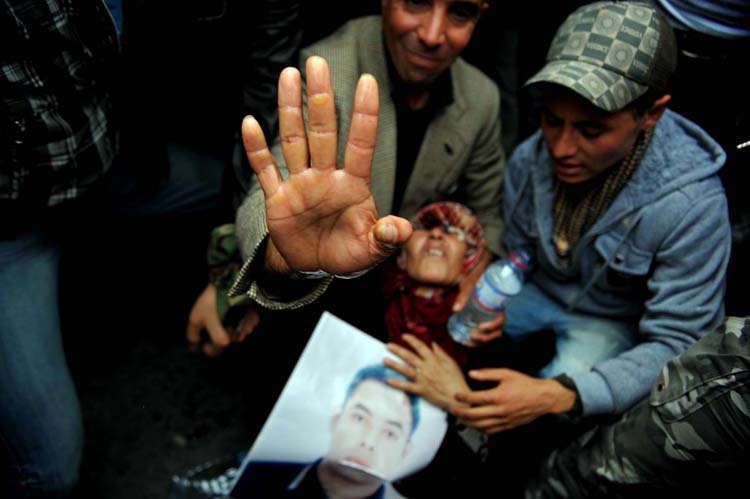 This woman’s son was among the victims of the Jasmine Revolution. (19.01.2011, Tunis)
This woman’s son was among the victims of the Jasmine Revolution. (19.01.2011, Tunis) 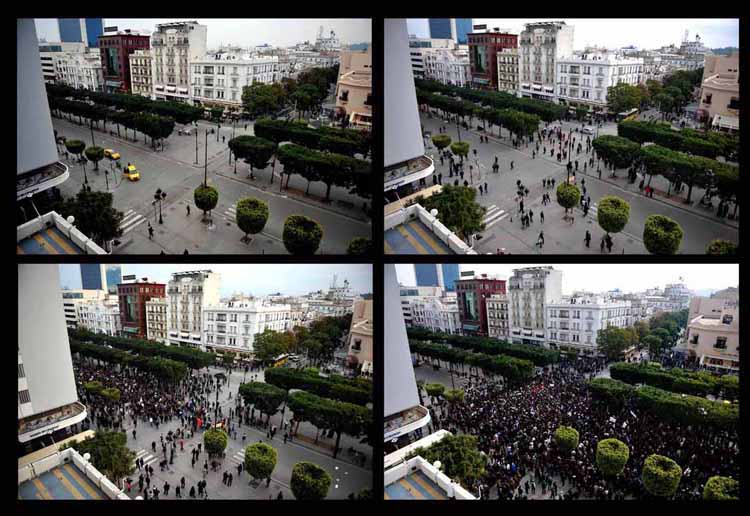 Habib Bourguiba Avenue in Tunis. (18.01.2011, Tunis)
Habib Bourguiba Avenue in Tunis. (18.01.2011, Tunis) 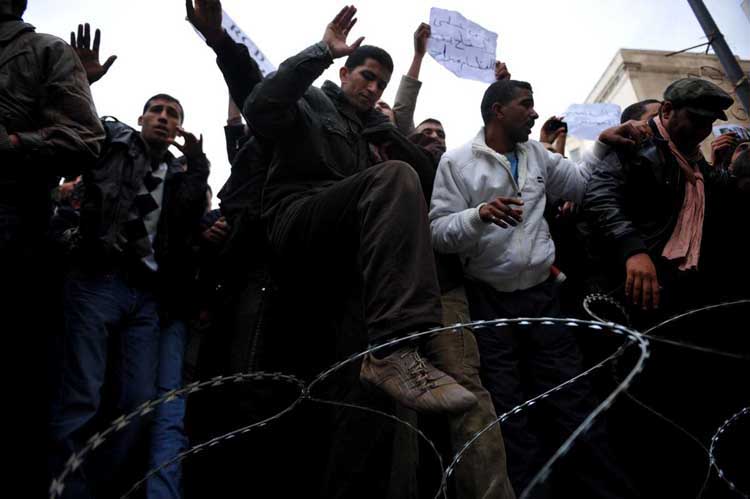 Protesters crossing over the barricades in front of the Interior Ministry, chanting ‘‘Dégage!’’ to the new government. (20.01.2011, Tunis)
Protesters crossing over the barricades in front of the Interior Ministry, chanting ‘‘Dégage!’’ to the new government. (20.01.2011, Tunis) 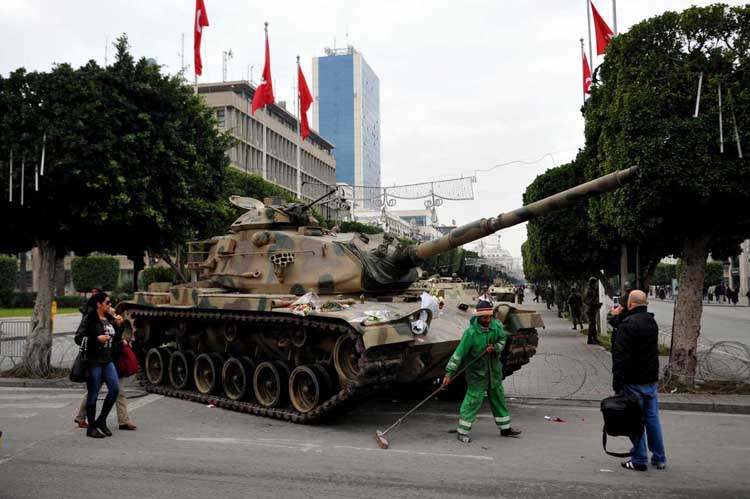 Tanks "protecting" the Interior Ministry on Habib Bourguiba Avenue. (18.01.2011, Tunis)
Tanks "protecting" the Interior Ministry on Habib Bourguiba Avenue. (18.01.2011, Tunis) 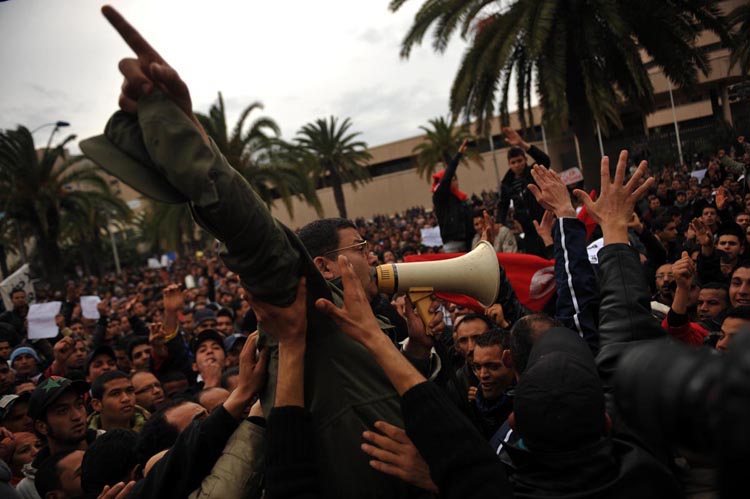 During weeks, thousands of Tunisians shouted “Dégage!“, calling for the downfall of the Ben Ali regime. (18.01.2011, Tunis)
During weeks, thousands of Tunisians shouted “Dégage!“, calling for the downfall of the Ben Ali regime. (18.01.2011, Tunis) 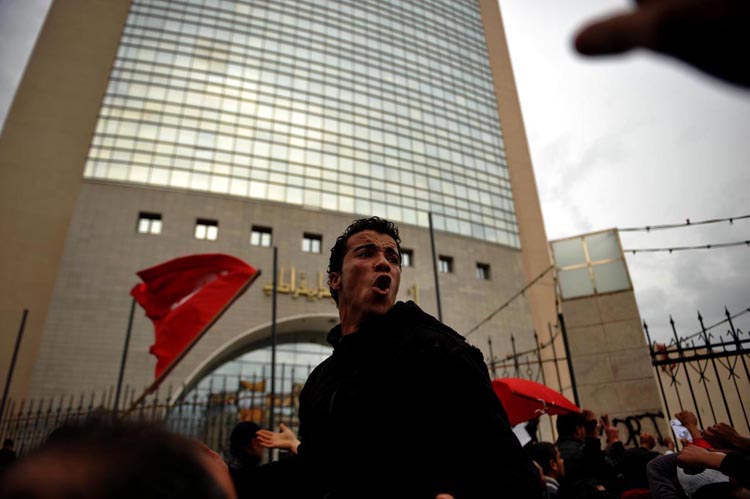 During weeks, thousands of Tunisians shouted “Dégage!“, calling for the downfall of the Ben Ali regime. (18.01.2011, Tunis)
During weeks, thousands of Tunisians shouted “Dégage!“, calling for the downfall of the Ben Ali regime. (18.01.2011, Tunis) 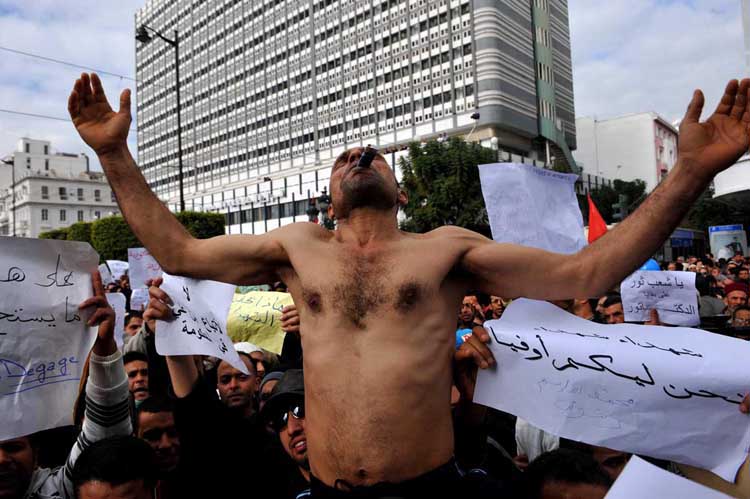 Demonstrator in a state of trance during a protest calling for the resignation of the transitional government. (19.01.2011, Tunis)
Demonstrator in a state of trance during a protest calling for the resignation of the transitional government. (19.01.2011, Tunis) 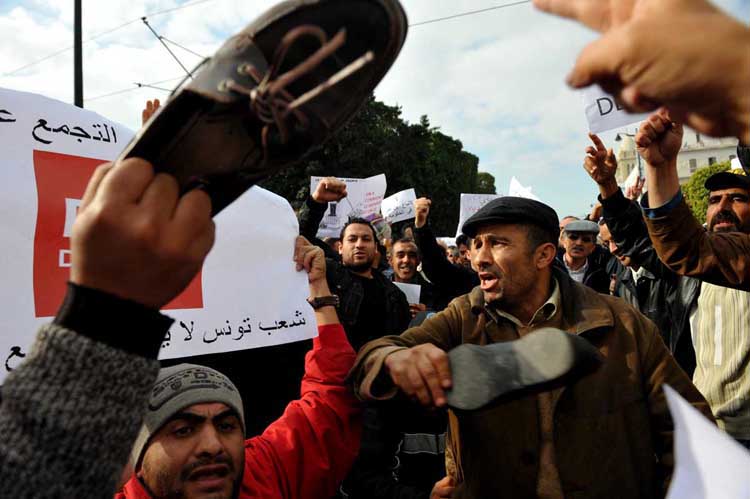 Shoes, a symbol of protest in Tunisia too. (20.01.2011, Tunis)
Shoes, a symbol of protest in Tunisia too. (20.01.2011, Tunis)  A red carnation for the Jasmine Revolution, in front of the former ruling party’s building (RCD or Constitutional Democratic Rally). (20.01.2011, Tunis)
A red carnation for the Jasmine Revolution, in front of the former ruling party’s building (RCD or Constitutional Democratic Rally). (20.01.2011, Tunis) 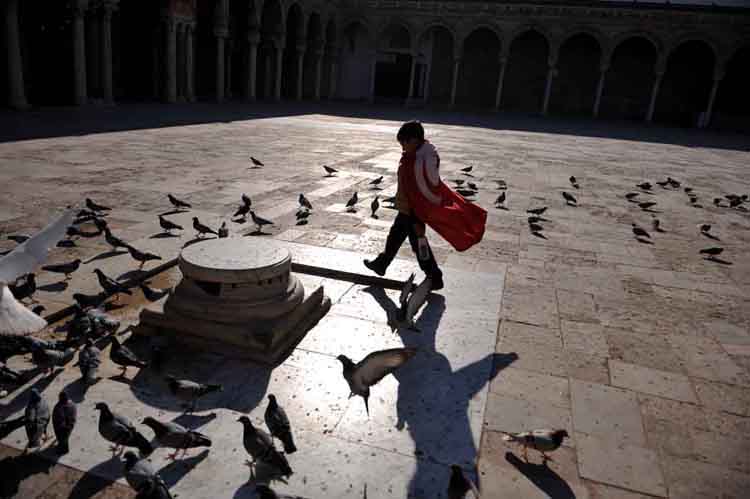 Man and pigeons in Zeytuni mosque, Tunis. (20.01.2011, Tunis)
Man and pigeons in Zeytuni mosque, Tunis. (20.01.2011, Tunis) 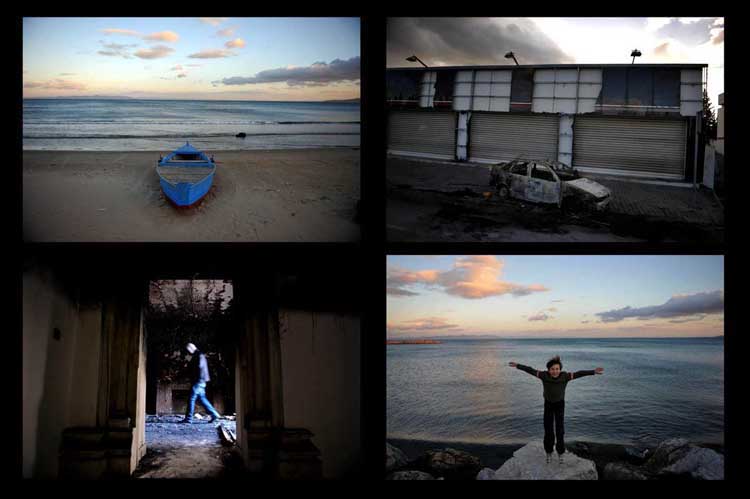 Protester wandering in what remains of Ali and Leila Ben Ali’s summer residence in Tunis (lower left) / Eleven-year-old Kais plays on the shores of Tunis, far away from the struggle in the streets (lower right).
Protester wandering in what remains of Ali and Leila Ben Ali’s summer residence in Tunis (lower left) / Eleven-year-old Kais plays on the shores of Tunis, far away from the struggle in the streets (lower right). 